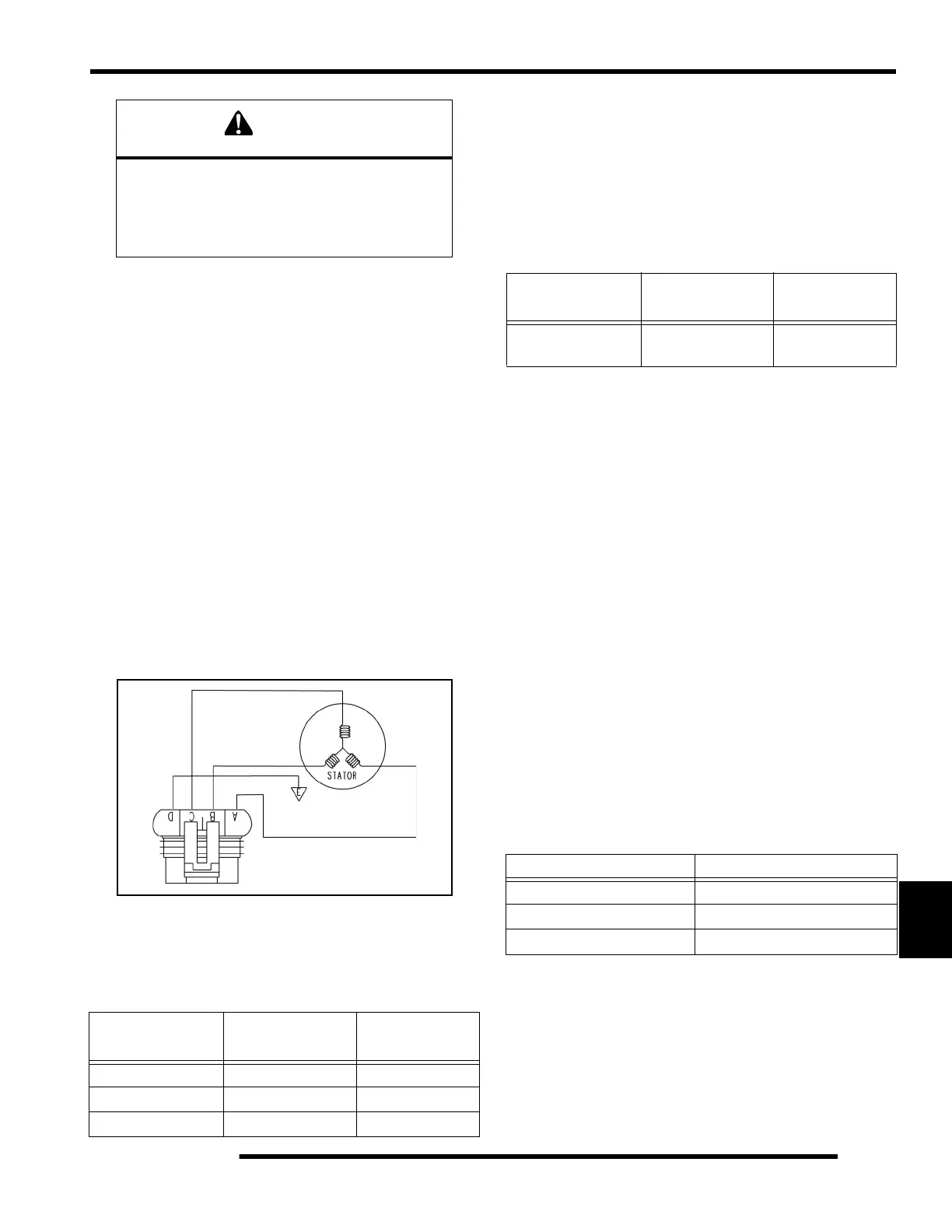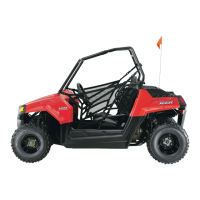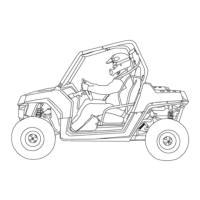10.23
ELECTRICAL
10
1. Using an inductive amperage metering device, (set to DC
amps) connect to the negative battery cable.
2. With engine off, key switch and lights in the on position,
the ammeter should read negative amps (battery discharge).
3. Shift transmission into park and start the engine. With the
engine running at idle, observe meter readings.
4. Increase engine RPM while observing ammeter and
tachometer. Note the RPM at which the battery starts to
charge (ammeter indication is positive).
5. With lights and other electrical loads off, the “break even”
point should occur at approximately 1500 RPM or lower.
6. With the engine running, turn the lights on and depress the
brake pedal to keep brake lights on.
7. Repeat test, observing ammeter and tachometer. With
lights on, charging should occur at or below 2000 RPM.
Charging System Alternator Tests
Three tests can be performed using a multi-meter to determine
the condition of the stator (alternator).
TEST 1: Resistance Value of Each Stator Leg
1. Measure the resistance value of each of the three stator
legs: Y1 to Y2, Y1 to Y3, and Y2 to Y3. Each test should
measure: 0.19 ± 15%
NOTE: If there are any significant variations in ohm
readings between the three legs it is an indication
that one of the stator legs may be weak or failed.
TEST 2: Resistance Value of Each Stator Leg to Ground
1. Measure the resistance value of each of the stator legs to
ground: Y1 to Ground, Y2 to Ground, Y3 to Ground.
Each test should measure: Open Line (OL)
NOTE: Any measurement other than Infinity (open)
will indicate a failed or shorted stator leg.
TEST 3: Measure AC Voltage Output of Each Stator Leg at
Charging RPM
1. Set the selector dial to measure AC Voltage.
2. Start the engine and let it idle.
3. While holding the engine at a specified RPM, separately
measure the voltage across each ‘leg’ of the stator by
connecting the meter leads to the wires leading from the
alternator (Y1 to Y2, Y1 to Y3, Y2 to Y3).
4. Refer to the following table for approximate AC Voltage
readings according to RPM. Test each leg at the specified
RPM in the table.
Example: The alternator current output reading should be
approximately 18 VAC at 1300 RPM between each ‘leg’.
NOTE: If one or more of the stator leg output AC
voltage varies significantly from the specified value,
the stator may need to be replaced.
Never start the engine with an ammeter
connected in series. Damage to the meter or
meter fuse will result.
Do not run test for extended period of time.
Do not run test with high amperage accessories.
Test
Connect Meter
Leads To:
Ohms Reading
Battery Charge Coil Y1 to Y2 0.19 ± 15%
Battery Charge Coil Y1 to Y3 0.19 ± 15%
Battery Charge Coil Y2 to Y3 0.19 ± 15%
Test
Connect Meter
Leads To:
Ohms Reading
Battery Charge Coil
Y1, Y2, or Y3
to Ground
Open Line
(Infinity)
RPM Reading AC Voltage (VAC) Reading
1300 18 VAC ± 25 %
3000 42 VAC ± 25 %
5000 64 VAC ± 25 %
